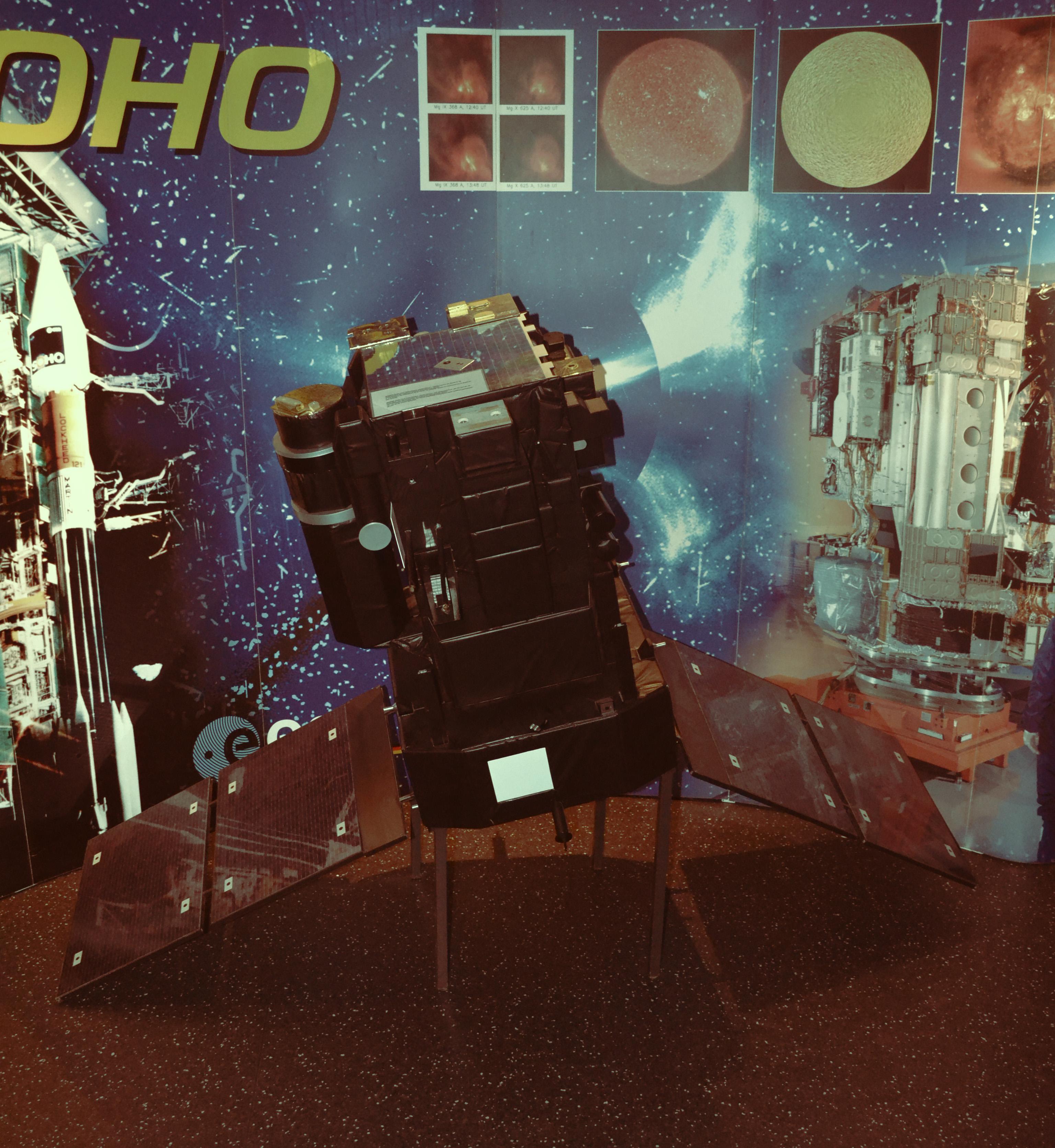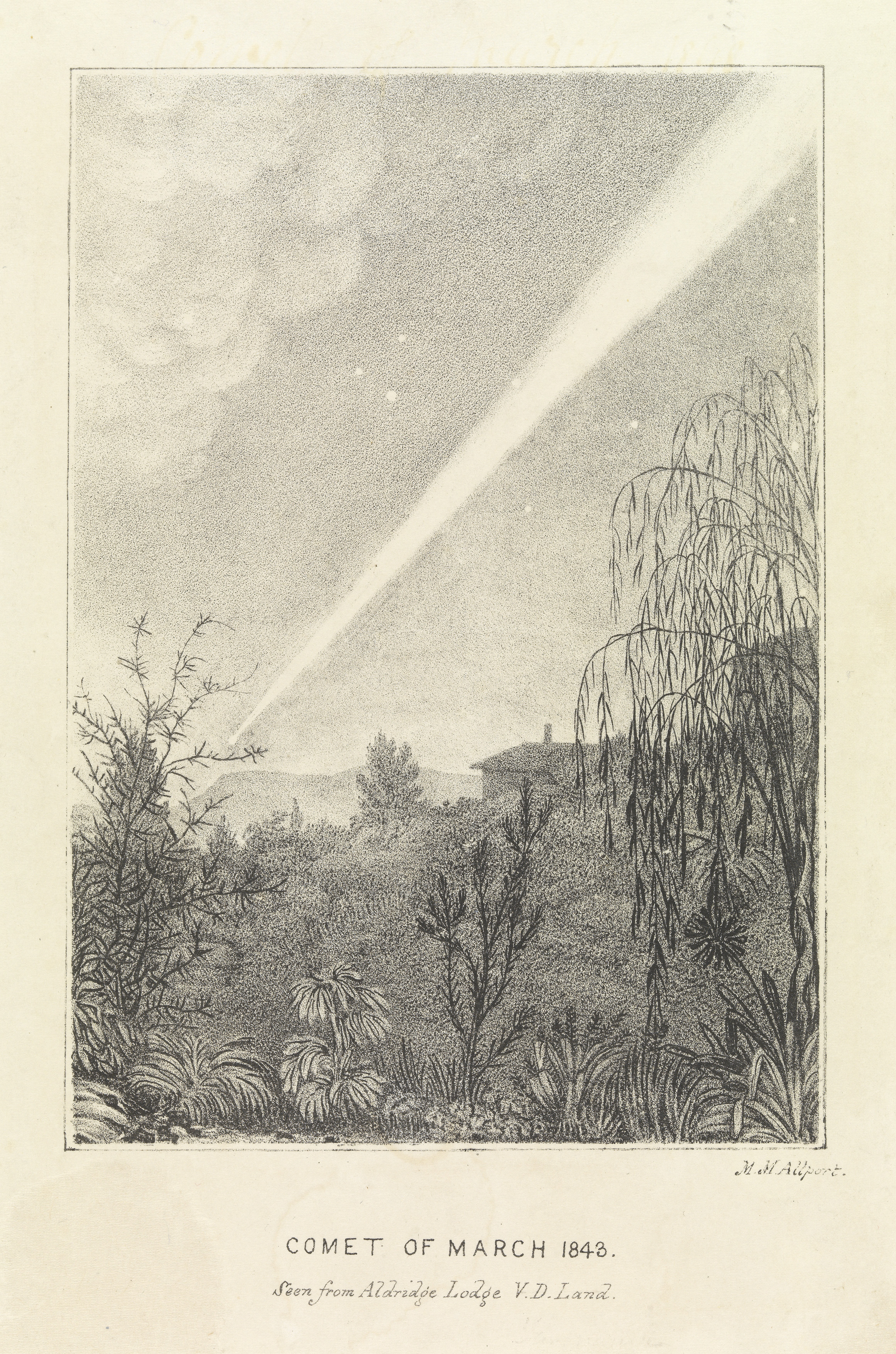|
Oort Limit
The Oort limit is a theoretical location at the outer limits of the Oort cloud, where the amount of comets and minor planets orbiting the Sun drops drastically, or drops entirely. The exact location of such a limit, if there is such one, is uncertain. About 100 comets, of 3500 known comets, come more than 5000 AU from the Sun, and a very few come as far as 20,000 AU from the Sun. So far, it appears that rather than a sudden drop in the amount of comets orbiting the sun at about 50,000 AU, the Oort cloud rather uniformly decreases in size, the further away from the Sun it goes. As current observations indicate, the Oort limit is somewhere around 50,000 AU (0.8 LY) from the Sun. Notes {{note, 1 Of these known comets, the majority (>2000) were discovered using the SOHO telescope, and are mostly sungrazing comets from the Kreutz Sungrazers. Of the other comets, about half of them are long-period comets, orbiting several hundred Astronomical Units out or further. Considering this, O ... [...More Info...] [...Related Items...] OR: [Wikipedia] [Google] [Baidu] |
Oort Cloud
The Oort cloud (), sometimes called the Öpik–Oort cloud, first described in 1950 by the Dutch astronomer Jan Oort, is a theoretical concept of a cloud of predominantly icy planetesimals proposed to surround the Sun at distances ranging from 2,000 to 200,000 AU (0.03 to 3.2 light-years).The Oort cloud's outer limit is difficult to define as it varies over the millennia as different stars pass the Sun and thus is subject to variation. Estimates of its distance range from 50,000 to 200,000 au. It is divided into two regions: a disc-shaped inner Oort cloud (or Hills cloud) and a spherical outer Oort cloud. Both regions lie beyond the heliosphere and are in interstellar space. The Kuiper belt, the scattered disc and the detached objects, the other three reservoirs of trans-Neptunian objects, are less than one thousandth as far from the Sun as the Oort cloud. The outer limit of the Oort cloud defines the cosmographic boundary of the Solar System and the extent of the Sun's Hill ... [...More Info...] [...Related Items...] OR: [Wikipedia] [Google] [Baidu] |
Astronomical Unit
The astronomical unit (symbol: au, or or AU) is a unit of length, roughly the distance from Earth to the Sun and approximately equal to or 8.3 light-minutes. The actual distance from Earth to the Sun varies by about 3% as Earth orbits the Sun, from a maximum (aphelion) to a minimum (perihelion) and back again once each year. The astronomical unit was originally conceived as the average of Earth's aphelion and perihelion; however, since 2012 it has been defined as exactly (see below for several conversions). The astronomical unit is used primarily for measuring distances within the Solar System or around other stars. It is also a fundamental component in the definition of another unit of astronomical length, the parsec. History of symbol usage A variety of unit symbols and abbreviations have been in use for the astronomical unit. In a 1976 resolution, the International Astronomical Union (IAU) had used the symbol ''A'' to denote a length equal to the astronomical ... [...More Info...] [...Related Items...] OR: [Wikipedia] [Google] [Baidu] |
Light-year
A light-year, alternatively spelled light year, is a large unit of length used to express astronomical distances and is equivalent to about 9.46 trillion kilometers (), or 5.88 trillion miles ().One trillion here is taken to be 1012 (one million million, or billion in long scale). As defined by the International Astronomical Union (IAU), a light-year is the distance that light travels in a vacuum in one Julian year (365.25 days). Because it includes the time-measurement word "year", the term ''light-year'' is sometimes misinterpreted as a unit of time. The ''light-year'' is most often used when expressing distances to stars and other distances on a galactic scale, especially in non-specialist contexts and popular science publications. The unit most commonly used in professional astronomy is the parsec (symbol: pc, about 3.26 light-years) which derives from astrometry; it is the distance at which one astronomical unit subtends an angle of one second of arc. Defini ... [...More Info...] [...Related Items...] OR: [Wikipedia] [Google] [Baidu] |
Solar And Heliospheric Observatory
The Solar and Heliospheric Observatory (SOHO) is a European Space Agency (ESA) spacecraft built by a European industrial consortium led by Matra Marconi Space (now Airbus Defence and Space) that was launched on a Lockheed Martin Atlas IIAS launch vehicle on 2 December 1995, to study the Sun. It has also discovered over 4,000 comets.(2,703 discoveries as of 21 April 2014) It began normal operations in May 1996. It is a joint project between the (ESA) and . SOHO was part of the Interna ... [...More Info...] [...Related Items...] OR: [Wikipedia] [Google] [Baidu] |
Kreutz Sungrazers
The Kreutz sungrazers ( ) are a family of sungrazing comets, characterized by orbits taking them extremely close to the Sun at perihelion. They are believed to be fragments of one large comet that broke up several centuries ago and are named for German astronomer Heinrich Kreutz, who first demonstrated that they were related. A Kreutz sungrazers's aphelion is about from the Sun; these sungrazers make their way from the distant outer Solar System from a patch in the sky in Canis Major, to the inner Solar System, to their perihelion point near the Sun, and then leave the inner Solar System in their return trip to their aphelion. Several members of the Kreutz family have become great comets, occasionally visible near the Sun in the daytime sky. The most recent of these was Comet Ikeya–Seki in 1965, which may have been one of the brightest comets in the last millennium. It has been suggested that another cluster of bright Kreutz system comets may begin to arrive in the inner Sola ... [...More Info...] [...Related Items...] OR: [Wikipedia] [Google] [Baidu] |
Kuiper Cliff
The Kuiper belt () is a circumstellar disc in the outer Solar System, extending from the orbit of Neptune at 30 astronomical units (AU) to approximately 50 AU from the Sun. It is similar to the asteroid belt, but is far larger—20 times as wide and 20–200 times as massive. Like the asteroid belt, it consists mainly of small bodies or remnants from when the Solar System formed. While many asteroids are composed primarily of rock and metal, most Kuiper belt objects are composed largely of frozen volatiles (termed "ices"), such as methane, ammonia, and water. The Kuiper belt is home to most of the objects that astronomers generally accept as dwarf planets: Orcus, Pluto, Haumea, Quaoar, and Makemake. Some of the Solar System's moons, such as Neptune's Triton and Saturn's Phoebe, may have originated in the region. The Kuiper belt was named after Dutch astronomer Gerard Kuiper, although he did not predict its existence. In 1992, minor planet (15760) Albion was ... [...More Info...] [...Related Items...] OR: [Wikipedia] [Google] [Baidu] |
Trans-Neptunian Region
A trans-Neptunian object (TNO), also written transneptunian object, is any minor planet in the Solar System that orbits the Sun at a greater average distance than Neptune, which has a semi-major axis of 30.1 astronomical units (au). Typically, TNOs are further divided into the classical and resonant objects of the Kuiper belt, the scattered disc and detached objects with the sednoids being the most distant ones. As of October 2020, the catalog of minor planets contains 678 numbered and more than 2,000 unnumbered TNOs. The first trans-Neptunian object to be discovered was Pluto in 1930. It took until 1992 to discover a second trans-Neptunian object orbiting the Sun directly, 15760 Albion. The most massive TNO known is Eris, followed by Pluto, , , and . More than 80 satellites have been discovered in orbit of trans-Neptunian objects. TNOs vary in color and are either grey-blue (BB) or very red (RR). They are thought to be composed of mixtures of rock, amorphous carbon and ... [...More Info...] [...Related Items...] OR: [Wikipedia] [Google] [Baidu] |





